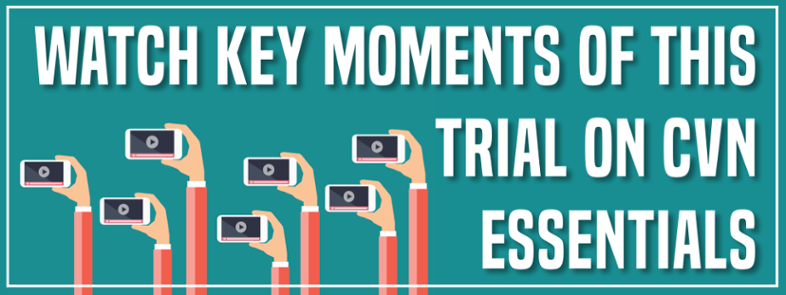As a trial attorney, your opening statement is arguably the most critical portion of your presentation, especially in jury trials. It provides you the opportunity to lay the foundation of the case and frame its key issues while the jury is at its most attentive. According to Atlanta attorney Andy Goldner, “If you could just present one part of the trial and then sit down and have the jury decide, it would be the opening statement.”
Michael Goldberg, of Fried Rogers Goldberg, agrees, saying the opening statement provides an attorney the best opportunity “not only to tell your client’s story persuasively to a jury without arguing it… but also to phrase the questions. And those are two very important things.”
Experts say nearly 2/3 of the population learns visually. In other words, they learn best by seeing information. Moreover, most people tend to retain information better when it's delivered both verbally and visually. That's why visual aids such as timelines and diagrams can be so effective in opening statements. However, simpler visual aids can be just as powerful. Direct, well-written questions presented on trial boards will frame issues in the light you want the jury to see them and can resonate throughout the trial.
Framing Your Trial's Issues on Opening: A Case Study
Goldberg and Goldner used trial boards to great effect during opening statements in Mary Fellers v. Just People, Inc., a wrongful death suit in which Hunter Fellers, an intellectually disabled resident of a group home owned by Just People, died during a pool party. Goldberg and Goldner, representing Hunter's mother, Mary, contended that Hunter drowned because Just People staffers failed to supervise the party. Defendants claimed that Hunter died of a cardiac arrhythmia.
In order to cut through complex questions of causation and damages, as well as potential juror sympathy for a defendant whose overarching goal was to aid the intellectually disabled, Goldberg supported his opening statement with trial boards that clearly framed the three questions he and Goldner wanted the jury to ask.
They included:
• Should someone watch the pool to make sure no one is injured or drowns when having a pool party with 45 mentally handicapped individuals, including many who have seizure disorders?
• Was submersion in water for more than six minutes a contributing factor to the death of Hunter Fellers?
• Is the value of the life of Hunter Fellers less because he was mentally handicapped?
The first question was worded to seem obvious on its face. It highlighted the lack of supervision at the facility and cut through defense arguments that site rules required adult visitors to swim at their own risk. It also allowed Goldberg to argue that a business with a positive mission to help intellectually disabled residents could nonetheless be held liable for an individual negligent act.
The second question highlighted the time Hunter was underwater, tangibly diminishing the defense’s causation arguments. “If you can frame the issue not, whether or not he drowned,” Goldner said, but “if you can change the question to ‘Did six-and-a-half minutes of being submersed in water play a role in his death?' Even if some of the jurors found that maybe he did actually die of an arrhythmia... if we could link the submersion to his death, then you’ve won that issue.”
Finally, Goldberg and Goldner wrote the third question to address the sensitive issue of damage calculations in the case. “Regardless of whether some jurors might think to answer that question as ‘Yes,’ I would bet that no jurors voiced the opinion that (Hunter's life) was worth less in the jury room, which I think is reflected in the verdict,” Goldner said.
The Fellers case was the first time either Goldberg or Goldner had used trial boards like this to frame jury issues during opening. However, the tactic helped deliver a $2 million verdict to Mary Fellers. “One or two of the jurors specifically told me in the jury room that they really appreciated the boards that we did because it helped them understand the issues,” Goldner said. “The themes came across well if the jury was just adopting what we told them to adopt as the issues in the case.”
Presenting issues on trial boards may not be the best tactic in every case. But, as Fellers demonstrates, it can provide the rhetorical punch that helps the jury see the case through your narrative when it comes time to consider a verdict.
Related Information
Courtney Svajian interviewed Atlanta attorneys Michael Goldberg and Andy Goldner on the Fellers case and trial strategy in general. The interview is a sample of CVN Local, which will provide unprecedented access to regional cases, including on-demand recordings of trials, attorney interviews, and editorial coverage. CVN Local will officially launch in September with coverage of Georgia cases, before expanding to other regions in the coming months.
View on-demand video of Fellers v. Just People, Inc. on our Proceedings page.





